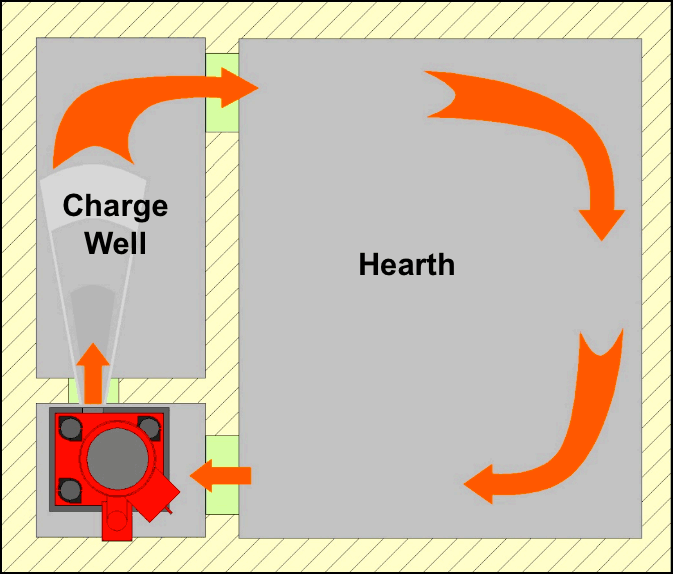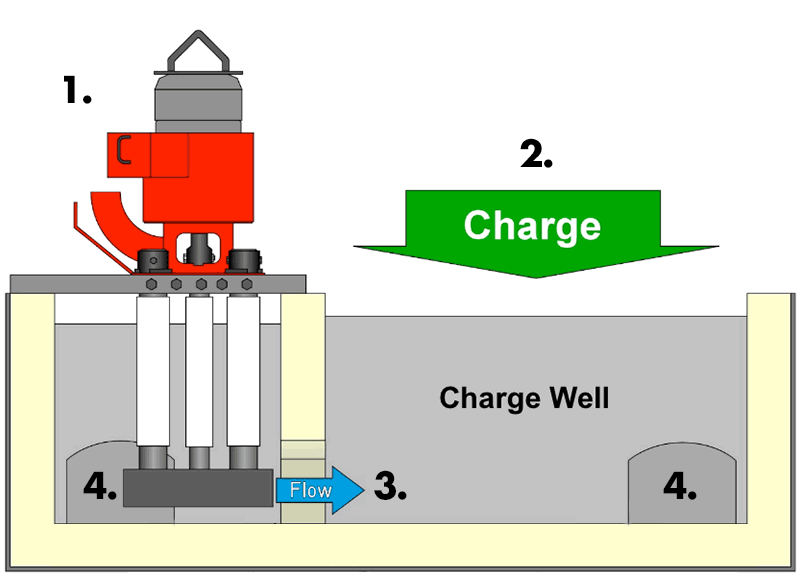Furnace Circulation

Having the right circulation technology offers more energy and melting efficiency, better alloying, longer refractory life, and better overall furnace productivity.

- Pump is suspended in the pump well
- Scrap, ingots, and other metal are introduced through the charge well. Dross is skimmed from the charge well.
- Submerged discharge of the pump is directed into the charge well through a small archway to prevent back flow.
- Submerged archways help prevent dross from being carried into main hearth and escape of exhaust gases.
Molten metal circulation is vital to recognizing the full melting capacity of your aluminum furnace.
Turning your furnace 7-8 times per hour will improve your heat transfer rate, and more melting can be achieved. Your production will increase.
In a typical system, the pump pulls hot metal from the hearth which pushes hot metal into charge well where it is needed to melt charged metal or scrap. This provides subsurface agitation of charge well to increase melt rate by melting scrap faster. Heat transfer is a direct function of the temperature difference between the roof and the metal surface. The greater the difference, the greater the rate of heat transfer thus improving performance.
Circulation of metal reduces temperature gradient in the metal. The circulation pump virtually eliminates the temperature stratification in the metal, thereby reducing the surface temperature of the metal and increasing the rate of heat transfer. During this process, energy efficiency is improved.
The circulation pump is a critical component to the success of furnace circulation. Generally speaking, in the world of molten metal pumps, “Bigger is Better.” Why? Bigger pump generates higher metal flow rates. A more robust pump achieves higher flow rates at lower shafts speeds for longer life. A bigger pump has larger passageways and will not clog as easily, therefore circulation improves.
